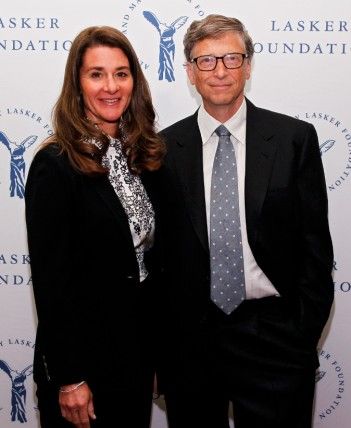Like so many good things, the story of modern corporate philanthropy starts with chocolate. As the industrial revolution took hold, it was a time of great opportunity as cities and factories expanded, but also a time of great poverty and squalid conditions. Few industrialists recognised this as much as the Cadbury family.
The Cadburys established the model village of Bournville for their chocolate factory workers to live in specifically to “alleviate the evils of modern, more cramped living conditions”. Concerned with their workers’ health and wellbeing, they designed and built village facilities for swimming and walking. And being Quakers, there was no alcohol allowed within the town.
Then in 1913, founder John’s grandson Barrow Cadbury set up the Barrow Cadbury Trust, which a century later remains committed to bringing about social justice. Their model is again one of largesse, rather than direct delivery as a grant-giving organisation.
This paternalistic model of giving is the bedrock of how we view the Victorians’ approach to charity; benevolent masters seeking to improve conditions for their workers and their communities, for altruistic purposes, but also for good business reasons. Combined with Liberal statesman Joseph Chamberlain’s notion of civic leadership and pride of place, which built our local government infrastructure, this sense of paternalism eventually led to the establishment of the welfare state and the 1950s Butskellite consensus – an alliance of Tory Rab Butler and Labour’s Hugh Gaitskell – that lasted throughout the immediate post-war period.
As the remit of the state expanded, the role of charities changed. Outright poverty in the UK lessened and the sense of charity altered accordingly. During the latter half of the 20th century, the UK became less influenced politically by the church, so the sense of charity as a Christian duty and a way of delivering alms for the poor receded. The role of the voluntary sector in providing direct relief from poverty was greatly reduced, though never totally went away, and was expanded into other areas of campaigning on social justice, medical research and relief.
With the rise of social enterprises, we are now seeing a new generation of businesses set up with explicitly social and environmental purposes
Under Thatcherism, the consensus on welfare was broken and remains so to this day. It was no longer seen as an unalloyed good or the unquestionable role of the state, but neither was UK poverty relief seen as the natural remit of charity. To choose to become involved in welfare was to be seen to make a political choice, rather than a moral one. Something few corporates were keen to do.
Their sense of philanthropy found new outlets in more neutral charitable areas and it was during the 1980s that we saw the rise of huge charitable events such as Live Aid, Children in Need and Comic Relief. Sponsorship of such events gave corporate philanthropists a safe space and a mutually useful role to play, not just in offering money, but also in promoting events, selling merchandise and raising the profile of the issues.
CORPORATE VOLUNTEERING
It was during these events that the idea of corporate volunteering began to take off. Staff in outlets would dress up or be sponsored by colleagues and customers alike to raise money for good causes.
As the political and corporate world globalised, so too did our awareness of third-world poverty and environmental threats. As investment opportunities grew in Africa and Asia, so too did the need for business to invest in their social and economic infrastructure. Doing so made sound financial as well as reputational sense.
The Bill and Melinda Gates Foundation is a clear example of this modern approach to the Barrow Cadbury model. What started as a programme to make the free internet widely available in US public libraries has become a vast grant-giving organisation specialising in treatment of preventable diseases and poverty relief in the third world, as well as promoting education and life chances in America.
The passionate belief in volunteerism and civic engagement of the founders and their sense that “if life happens to bless you, you should use those gifts as well and as wisely as you can”. Modern Cadburys indeed. But they are not alone in understanding the power of volunteering.
A 2011 Forbes Insight report into corporate philanthropy found that encouraging volunteerism among staff is one of the key drivers of this business behaviour. More than two thirds of companies of all sizes surveyed for the report say volunteerism is an essential part of their company’s leadership development strategy.
This focus on volunteering shows the way the approach to such charitable works has also shifted from one focused on participation to one focused on skills. Where once it was expected that volunteering would be the great leveller, with chief executives expected to carry sandbags and pick litter with everyone else, charities have wised up to the range of abilities and help they can get from the corporate sector.
Instead of the chief financial officer sitting in a bath of baked beans to raise a few hundred pounds, it is often far more valuable, for example, for them to donate a few hours to help balance the books of a local organisation or branch of a larger charity.
SOCIAL ENTERPRISES
With the rise of social enterprises, we are now seeing a new generation of businesses set up with explicitly social and environmental purposes. While such organisations tend to be smaller and more agile, they have the freedom that their social purpose and lack of profit responsibility to external shareholders brings. These are a new breed of businesses that are using their entrepreneurial skills, not just to compete with traditional corporations’ corporate social responsibility activities, but also to shake up a charitable sector that many saw as too corporate in itself.
These organisation bring new opportunities for more traditional businesses though through partnerships that benefit both sides, allowing the more risk-adverse purchaser to take risks on these smaller companies while allowing larger businesses to win contracts designed to favour work with small and medium-sized enterprises, although building broad partnerships, and to deliver imaginative, on-the-ground social change.
The Social Value Act 2012 has brought this to the fore. Procurers of public services must now have regard to economic, social and environmental services in connection with all contracts. The size of the state, whether locally or nationally, is shrinking and will continue to do so for some time. This means there will continue to be increased outsourcing of provision of services and related goods.
As councils and other public bodies increasingly become commissioners rather than providers of services, the companies they deal with must demonstrate the good they and their supply chain bring to the localities in which they work. While the public sector may be getting smaller, the impact such changes have on the way we do business is still seismic and will continue to be so.
The future of corporate philanthropy is moving away from a model of grand projects and large-scale monetary giving to a more vibrant and complex world of relationship and capacity building, volunteering and locally based partnerships. It is not as simple as writing a cheque – if it ever was – but it is now a more exciting time than ever to be an entrepreneur looking to do good.

CORPORATE VOLUNTEERING

